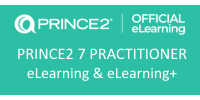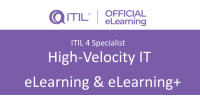Course Description
Objectives
All our courses have a strong practical component. The theoretical part is constantly complemented by simulations on real business problems.
The course is mainly focused on practical applications of the TOGAF® architecture framework, which builds on the concepts (basic concepts) and understanding gained in Level 1, and through practical scenarios helps to reinforce the concepts. The objective of the Level 2 certification is to be able to confirm that in addition to a simple understanding and knowledge of TOGAF® EA Foundation, the candidate is able to analyse and put the acquired knowledge into practice.
- Everything required to pass the official TOGAF® Enterprise Architecture Practitioner (Level 2 exam) based on TOGAF® Standard
- At the end of each section of the course, there will be a hands-on exercise to fix the concepts just explained and become familiar with the exam questions.
This course leads to the TOGAF® EA Practitioner certification exam session, the passing of which provides a professional-level qualification in Enterprise Architecture.
Who it is addressed to
- Individuals who wish to learn more about TOGAF® Standard, e.g. System Integrator vendor neutral, Operational, Business and IT Developers, CIOs and IT Managers, Programme and Project Leaders, IT Specialists, Enterprise Architects.
- Professionals who are working in organisations that have adopted TOGAF® standard and are involved in architectural projects and initiatives.
- Architects who will be responsible for the development of architectural artefacts.
- Architects who wish to introduce TOGAF® standard into an existing architecture.
- Architects who wish to obtain a recognised certification to demonstrate an in-depth level of knowledge of TOGAF® standard.
- Anybody interested in learning more about Enterprise Architecture and TOGAF® Standard
Contents of the TOGAF® EA Practitioner course
- Unit 1 - The Context for Enterprise Architecture
- The purpose of this Learning Unit is to help the Enterprise Architecture practitioner understand the context within which they must operate.
Unit 2 - Stakeholder Management
- The purpose of this Learning Unit is to help the Candidate understand how to apply Stakeholder Management.
Unit 3 - Phase A, the Starting Point
- The purpose of this Learning Unit is to help the Candidate understand how to execute the Architecture Vision phase and applicable techniques.
Unit 4 - Architecture Development
- The purpose of this Learning Unit is to help the Candidate understand how to develop the architecture (Phases B, C, and D) and useful techniques.
Unit 5 - Implementing the Architecture
- The purpose of this Learning Unit is to help the Candidate understand how to implement the architecture (Phases E, F, and G) and useful techniques.
Unit 6 - Architecture Change Management
- The purpose of this Learning Unit is to help the Candidate understand Architecture Change Management and the relation to Stakeholder Management.
Unit 7 - Requirements Mgt
- The purpose of this Learning Unit is to help the Candidate understand how to apply the process of managing architecture requirements and the relation to Stakeholder Management.
Unit 8 - Supporting the ADM work
- The purpose of this Learning Unit is to help the Candidate understand which supporting means can be used while executing the ADM.
Trainer
BITIL.COM lecturers are accredited (Accredited Trainer) by the international training body to teach and supervise exams; specialists in Enterprise Architecture, they are professionals with many years of experience in TOGAF® adoption in medium and large Organization, able to transfer a vendor-independent and totally business-oriented implementation approach.
TOGAF® EA Practitioner course from BITIL.COM is accredited by The Open Group.
Registered Trademarks. TOGAF® is a registered trademark of The Open Group, the use of which is permitted only with the permission of The Open Group. All rights reserved.
Language
Teaching Language: English, French, German, Italian, Spanish
Manual Language: English
Prerequisites
To be eligible for TOGAF® EA Practitioner, you must have already passed the TOGAF® EA Foundation examination.
Certification Examination
Examination Type: Online with Proctor
Official Certificate: TOGAF® EA Practitioner | The Open Group
Exam Language: English
Exam Format:
The TOGAF® Enterprise Architecture Practitioner real exam consists of 8 complex multiple choice scenario based questions.
- The time allowed for the REAL exam is 90 minutes.
- You must achieve 60% (24 out of 40 points) or more of all possible marks to pass
- All questions should be attempted
- You have 90 minutes to complete this exam.
- Additional time (30 minutes) is allowed for candidates for whom English is a second language where the examination is not available in the local language
Each scenario consists of a gradient scored, multiple-choice, single response question.
There is a maximum of five (5) points per question.
- The CORRECT answer scores five (5) points.
- The SECOND BEST answer scores three (3) points.
- The THIRD BEST answer scores one (1) point.
- The DISTRACTER (the incorrect answer) scores zero (0) points.
Retake (2nd shot): If you fail, the exam can be retaken a second time free of charge, only if option activated.
All those who have successfully completed their examination will receive an electronic certificate from The Open Group. This electronic certificate has the characteristics of uniqueness, security and can be verified by those who wish to check its validity.
Certification Badge
The Open Group Certified: TOGAF® Enterprise Architecture Practitioner
Certification is open to all applicants – there is no requirement for any previous certification.
- For Candidates with no prior TOGAF® Certification: To achieve certification a Candidate must complete the Level 1 and Level 2 Learning Units defined in Section 3 of the TOGAF® Certification Program Conformance Requirements (Multi-Level), Version 4.0 document and pass the applicable examinations.
- For Candidates with no prior TOGAF® Certification: Candidates are required to have passed both the TOGAF® Enterprise Architecture Part 1 examination and the TOGAF® Enterprise Architecture Part 2 examination.
- For Candidates who hold the TOGAF® 9 Certified qualification: To achieve certification a Candidate must complete the Learning Units defined in the TOGAF® Enterprise Architecture Practitioner Bridge Conformance Requirements, Version 1.0 document and pass the applicable examination.
- For Candidates who hold the TOGAF® 9 Certified qualification: Candidates are required to pass the TOGAF® Enterprise Architecture Bridge examination.
The Open Group Certified: Applied TOGAF® Enterprise Architecture Practitioner
Candidates who have successfully completed the TOGAF® Enterprise Architecture Practitioner Learning Studies as part of an accredited training course are eligible to be issued the Applied TOGAF® Enterprise Architecture Practitioner.
Note: The Learning Studies are a mandatory part of all accredited courses and cover the higher-level Bloom’s taxonomy learning outcomes (application and analysis). They are not a practice test.
- The learning studies for TOGAF® Enterprise Architecture Practitioner is a set of eighteen scenario questions. It provides active learning in the form of problem-based learning to reinforce aspects of the syllabus.
- You need to work your way through the story (a series of scenarios) based around a single case study with a problem in each of the scenarios. You are then required to solve the problem by selecting the best of four possible answers
- They are intended to be taken multiple times and to be subject to discussion with the trainer.
Earning Criteria
- The earner has earned the TOGAF® Enterprise Architecture Practitioner certification badge.
- The earner has successfully completed the TOGAF® Enterprise Architecture Practitioner Learning Studies as part of an accredited TOGAF® Enterprise Architecture training course under the supervision of an authorized trainer.
The "Applied Badge" is provided to those ATC attendees who obtain the TOGAF® EA Practitioner Certification however it must be applied for via a separate process.







